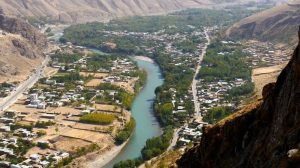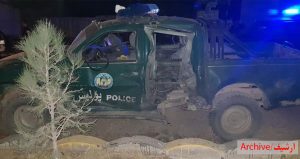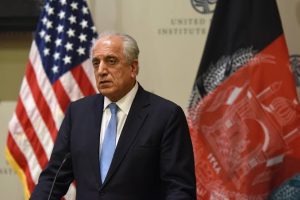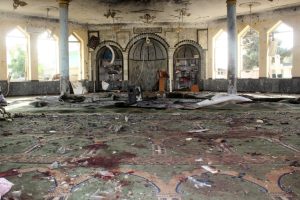150 Dead, More than 200 injured in a targeted attack on Shia muslims in Kunduz
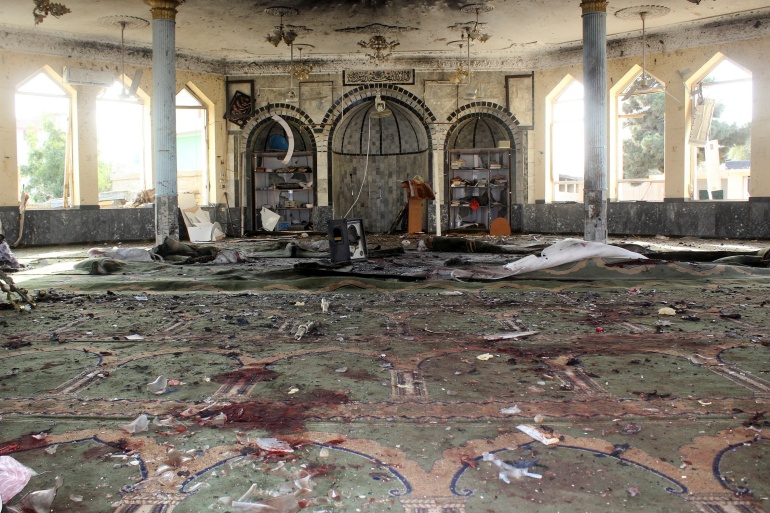
ISIS Bomber Kills Dozens at Shiite Mosque in Northern Afghanistan
The Islamic State Khorasan claimed responsibility for the attack in Kunduz, continuing its campaign of predation against the Hazara Shiite minority into a new era of Taliban rule.
Oct. 8, 2021
KABUL, Afghanistan — An Islamic State suicide bomber devastated a Shiite mosque in the northern Afghan city of Kunduz on Friday, killing dozens of worshipers in a deadly continuation of the terrorist group’s campaign against the Hazara minority.
The massacre, while the mosque was crowded for Friday Prayer, was the group’s second attack against a mosque in just a few days. And it was the realization of Afghan Hazaras’ fears that the Islamic State’s predation would go unchecked under the rule of the Taliban, which itself preyed on the Hazara in the past.
Witness accounts described a powerful explosion with many casualties. Matullah Rohani, a Taliban official in Kunduz, told local media that at least 43 people were killed by the attack and more than 140 were injured.
A local Shiite community leader put the death toll much higher. Sayed Ahmad Shah Hashemi, who represents Kunduz Province’s Shiite population, told The New York Times that more than 70 people were killed in the attack.
“This deadly incident has caused trauma among Shiites and other sectors of the society,” Mr. Hashemi said.
Hours after the bombing, it was claimed by the Islamic State Khorasan, also known as ISIS-K. It was the group’s deadliest strike since the suicide bombing at the international airport in Kabul on Aug. 26 that killed about 170 civilians and 13 U.S. troops.
ISIS-K is a Sunni extremist group that has long targeted Shiite Muslims in Afghanistan, focusing heavily on the Hazara ethnic minority, which is predominantly Shiite. Most of Afghanistan is Sunni, and ethnic Pashtuns — who make up most of the Taliban’s ranks — are a plurality in the country.
ISIS-K also staged an attack several days ago outside a mosque in Kabul, the capital, which killed several people.
In the months before American forces withdrew from Afghanistan, some 8,000 to 10,000 jihadist fighters from Central Asia, the North Caucasus region of Russia, Pakistan and the Xinjiang region in western China poured into Afghanistan, a United Nations report said in June. Most were said to be associated with the Taliban or Al Qaeda, which are closely linked, but others were allied with the Islamic State.
In claiming the attack in Kunduz on Friday, the ISIS-K statement said that the attacker was ethnic Uyghur — an oppressed Muslim minority in western China. China has long been concerned that Afghanistan could become a haven for Uyghur militants who might seek to attack Chinese government interests in revenge for its abuses against the Muslim population in Xinjiang.
The newly installed Taliban government, having overthrown the country’s Western-backed administration in August, is struggling to contain an invigorated Islamic State. The group has grown increasingly antagonistic in recent weeks, conducting guerrilla-style attacks and bombings that have included Taliban fighters among the dead. The new government is also struggling with a collapsing economy as foreign funding remains largely frozen.
As Taliban officials shift from leading an insurgency to forming a functioning state, providing security to a population ravaged by more than 40 years of war has been their benchmark. But Islamic State attacks have undercut the Taliban’s promises.
The Taliban’s chief spokesman, Zabihullah Mujahid, condemned the attack on Friday, and vowed retribution.
For Afghanistan’s Shiite minority, the new Taliban era has seen a continuation of the predation and violence that has stalked them for decades.
The Hazara grew increasingly bitter toward the U.S.-backed government of President Ashraf Ghani in recent years, accusing it of doing little to protect them against sectarian massacre. And they looked at the Taliban’s return to power with dread: During the 1990s civil war era and first Taliban government in Afghanistan, the group made a point of targeting Hazara Shiites..oup made a point of targeting Hazara Shiites..
Source: NY TIMES
